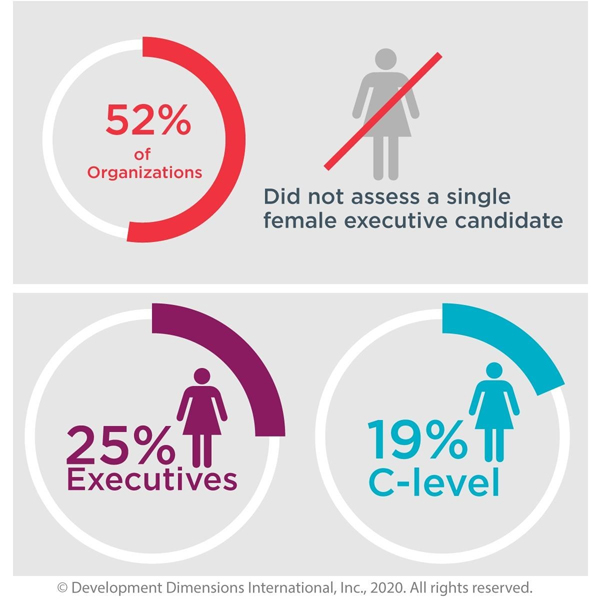Global leadership consulting firm DDI has revealed that more than half of organisations (52%) don’t assess a single female candidate when looking for their next CEO. When there was one woman in the CEO talent pool, ‘she was never hired for the role’, according to its latest research, Executive Leadership Outlook 2020.
Furthermore, female candidates comprise only 25% of executive candidates and 19% of C-level candidates, confirms DDI. The study collected data from more than 55,000 executive assessments, including 1,100 CEO candidates over a decade.
INCLUSIVE PIPELINES
“The lack of diversity revealed in the Executive Leadership Outlook 2020 presents missed opportunities to identify and develop talent from new backgrounds and areas,” stated Stephanie Neal, Director of DDI’s Center for Analytics and Behavioral Research (CABER). “Organisations that want to unleash new capabilities and future talent need to seek out leaders who think and operate differently. They’re going to need stronger, more inclusive pipelines to find these fresh perspectives and wisdom.”
According to DDI, this lack of a diverse pipeline extends beyond gender to other demographics and backgrounds including functional area. Most organisations select their senior and C-level executives from only one or two functional areas, from operational or finance roles most of the time, but very rarely from IT or HR.

CRITICAL CAPABILITIES
Along with diversity and inclusion shortcomings, the study revealed executives and C-level candidates are often unprepared to step into higher positions, lacking development in critical capabilities. “The Executive Leadership Outlook 2020 provides an inside look at who organisations consider for senior roles, and where their strengths and weaknesses lie,” Neal said. “This data helps companies better understand where they need to focus to prepare leaders for their most important – and highest risk – roles.”
Other key findings in the Executive Leadership Outlook 2020 include:
- Executives and most CEO candidates are best equipped for present challenges but are less prepared for strategic challenges, such as building and entering new markets.
- Less than 15% of executives exhibit strength in money skills, suggesting growth occurs after transitioning into an executive role.
- Executives struggle most with influence, hindering their ability to fuel transformation and change initiatives.
- New leaders often come into their roles unprepared, causing higher levels of scrutiny and an exponentially increased risk of failure.
- Many organisations show questionable readiness to adopt and take advantage of a team concept for leaders.
- Well-aligned senior teams handle change better and are 22% more likely to be able to effectively fill critical leadership roles.
Click here for a copy of the report.







































